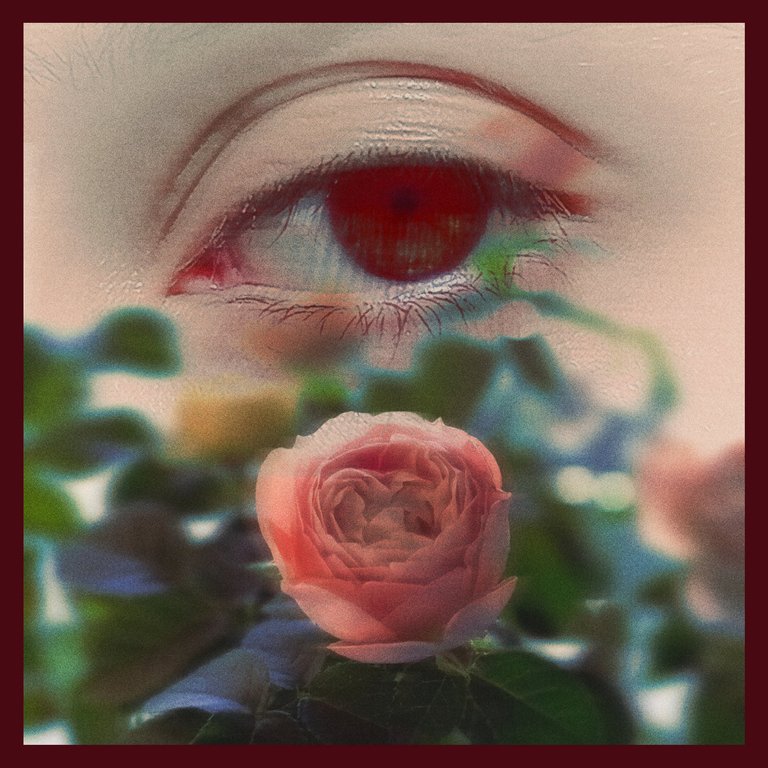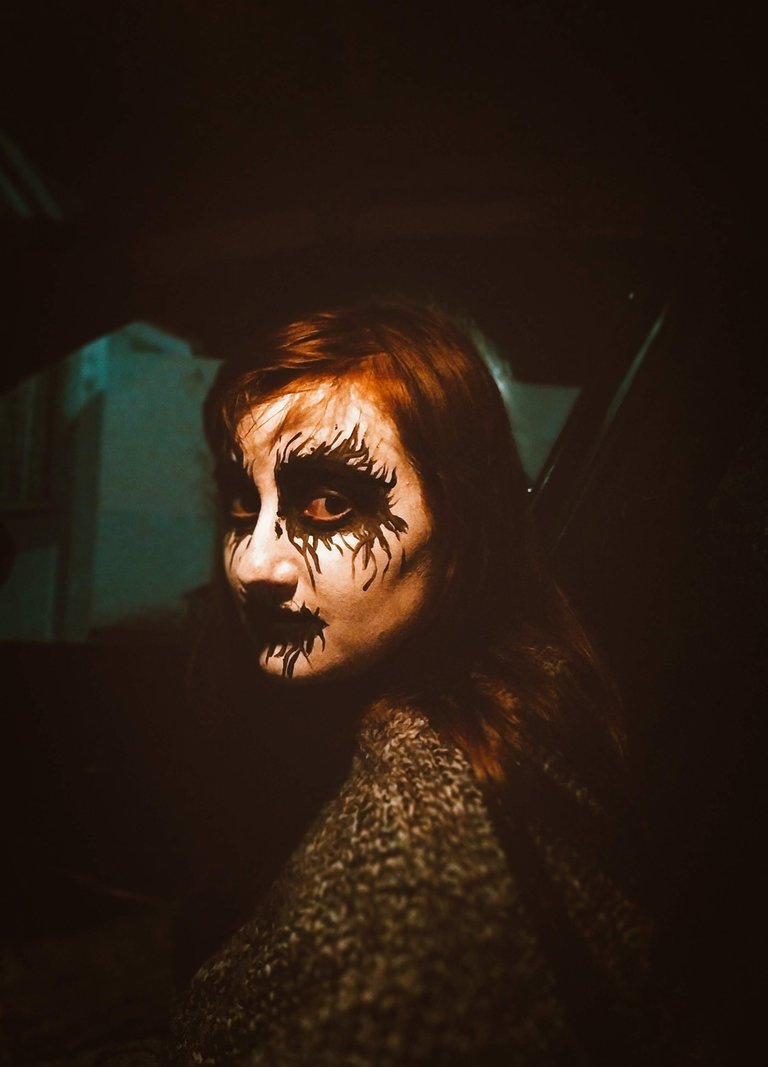Album Review: Como Você Caiu Dos Céus, ó Estrela da Manhã, Filho da Alvorada! - Apolinária da Ínsula de Levi
Today I'm bringing you a review of the latest album by Apolinária da Ínsula de Levi: "How You Fell From Heaven, O Morning Star, Son of the Dawn!". I've made a perceptive track-by-track analysis of the work and I hope you enjoy it!
The album opens with a classic curtain of ambient textures that usually permeate Apolinária's work. At that first moment, you can already see an elaborate use of vocals, which was less present on previous albums. A piano phrasing a vague, distant melody that recalls that old feeling of a lost memory is interspersed with drum cymbals or something like that, painting the scene. The libretto that accompanies the work sheds more light on the meaning of each song (thus aiding a more correct interpretation of what is to be understood about them), and this first track called "Inside the Chalice there is Blood" becomes richer and deeper with the reading that accompanies it. I'll let you read it yourself to absorb the content. So I'll stick to expressing my opinion and perception of the songs based solely on them, but as the composer herself said: - It is essential that you read the libretto that accompanies the work in order to understand it better.

In Mater Daemonica we then have a moment of silence after the immersive and textured introduction that seems to follow on from the first track, and between subtle, jazzy drum cymbals and an African kalimba, silence emerges as part of the experience, followed by a ritualistic chant that refers to something like psychedelic Buddhism and experimental contemporary music in an interesting choir of voices in different melodies, building an almost hypnotic or schizophrenic scenario for the listener. The chanting that passes between the ears in a ping pong delay system creates peculiar sensations.
Musae Hipnotica begins with a new vocalized song, in a chorus of voices making bizarre sounds that gradually build up a state of auditory torpor, sometimes reminiscent of Walter Franco in his first work, sometimes reminiscent of Arnaldo Antunes' O Corpo project, sometimes referring to something more hypnotic and inducing altered states of consciousness. So far, the vocals have been the main instrument in this work and they are being explored very well, in a way that is quite advanced compared to previous works. Towards the end of the track you can hear a solitary mouth harmonica sounding in a kind of audio-mnemonic flashback, which takes center stage and ends the song masterfully.

Then there's Suspiria, which begins with the same harmonica in a lower, more airy melody, along with dark sounds reminiscent of an abandoned hospital, almost as if you could hear echoes of a past where the place was full of people. A chant in an eerie demonic voice interspersed with heavy sighs/exhalations takes center stage in this dark dive. The dense, damp sounds of a piano then enter, crescendoing with melodic phrases in the middle to the sound of what seem to be high-pitched grunts that immediately recall Silent Hill. The voices return, piling up under the sounds that are already texturing the dark picture. The track's ambient drone-like folk horror experimentalism permeates its nineteen minutes, but it's halfway through that things start to get really bizarre. A half-robotic, half-demonic voice that made me think of some ambivalent sacred entity from a PlayStation 1 game begins to speak or sing unintelligible things, deep bass accompanies its speech and something even more frightening appears in this "dialog", with a very deep intonation that sounds like a synthetic-biological and probably extra-corporeal amalgam.
After this immersion in para-tropospheric layers, we move on to the track "Folie à Plusieurs", which brings a new element to the experience, a violin that rips agonized notes amidst sultry tinkling. Pay attention to the writing of the libretto for this track, it's very good! The lachrymose violin almost drips in the painfully dark and muffled atmosphere of the music. The next track is "The Way Back Is Always Worse", with a buzzing sound, oscillating between the ears of a kind of marimbondo, which is soon covered by a dense, vertiginous soundscape. The percussive melody that marks the tempo of the track is reminiscent of the sound of an electric fence on a vast estate filled with fog. The setting, reminiscent of Silent Hill, grows and grows in a wave of sound with multiple layers interspersed richly. After Suspiria, this is my favorite track.

In "Sou o Sol, Você é a Lua" (I'm the Sun, You're the Moon), Apolinária's traditional ambience regains its strength with polyphonic vocals that increasingly occupy the listener's perception of sound. The ambient texturing of the sound, full of indecipherable noises that become melodies, is the best thing about all the composer's work, her skill in working with sounds is unquestionable. Next up, "Os Anjos Estão Cantando e Tudo Está em Seu Devido Lugar" (The Angels Are Singing and Everything Is in Its Rightful Place) features a previously unheard of use in the project: a string arrangement, or perhaps an entire orchestra? I don't know, but it's by far the most similar song to what is traditionally called "music". However, it's obviously loaded with the cosmic tones that permeate Apolinária's works. At times it's reminiscent of Sigur Ros, at others of Bach and at others of Pachelbel, all mixed with an intoxicating sensation of returning home, of the sky opening up and the evaporation of the raw material that forms man. It's difficult to understand whether these are samples or not, but whatever the case, it's an incredible track. Impeccable to end this incredible album, which is full of biblical references interspersed with hermeticism, satanism and the occult in general, as well as obviously being pure poetry. Like everything from Apollinaris of the Insula of Levi, this work has a lot of the dark and the dense, but it is the most "solar" of all. Not to be missed.
Libretto accompanying the album

Hoje trago para vocês o review do mais recente álbum de Apolinária da Ínsula de Levi: "Como Você Caiu Dos Céus, ó Estrela da Manhã, Filho da Alvorada!". Fiz uma análise perceptiva faixa-a-faixa do trabalho e espero que gostem!
O álbum abre com uma clássica cortina de texturas ambientes que costumam permear o trabalho de Apolinária. Nesse primeiro momento já se pode notar um trabalho elaborado no uso de vozes, que era menos presente nos álbuns anteriores. Um piano fraseando uma melodia vaga e distante que remete àquela velha sensação de memória perdida intercalam-se com pratos de bateria ou coisa do tipo fazendo uma pintura da cena. O libreto que acompanha a obra traz mais luz sobre o significado de cada música (auxiliando assim uma interpretação mais correta do que se deve compreender à respeito delas), e esta primeira faixa chamada "Dentro do Cálice há Sangue" torna-se mais rica e profunda com a leitura que a acompanha. Vou deixar que vocês mesmos leiam para absorver o conteúdo. Atenho-me então a expressar minha opinião e percepção das músicas unicamente baseando-me nelas mesmas, mas como disse a própria compositora: - É fundamental que você leia o libreto que acompanha a obra para compreende-la melhor.

Em Mater Daemonica temos então um momento de silêncio após a introdução imersiva e texturizada que parece dar sequência ao que se obteve na primeira faixa, e entre pratos de bateria sutis meio jazzisticos e uma kalimba africana o silêncio surge como parte da experiência, seguida então de um canto ritualístico que remete a algo meio budismo psicodélico e música contemporânea experimental num coral interessante de vozes em diferentes melodias construindo um cenário quase hipnótico ou esquizofrênico ao ouvinte. O canto que passeia entre os ouvidos num sistema ping pong de delay cavocam sensações peculiares.
Musae Hipnotica começa com uma nova cantiga vocalizada, num coro de vozes fazendo sons bizonhos que vão pouco a pouco construindo um estado de torpor auditivo, hora lembrando Walter Franco em seu primeiro trabalho, hora lembrando o projeto O Corpo de Arnaldo Antunes, hora remetendo a algo mais hipnótico e indutor de estados alterados da consciência. As vozes até agora são o instrumento principal dessa obra e estão sendo muito bem exploradas, de uma forma bastante avançada em relação aos trabalhos anteriores. Pelo final da faixa escuta-se uma gaitinha de boca solitária soando numa espécie de flashback audio-mnemônico, que ganha o espaço principal e finaliza a música com maestria.

Temos então Suspiria, que começa com a mesma gaita em uma melodia mais grave e ventilada, juntamente a sons obscuros que remetem a um hospital abandonado, quase como se desse para ouvir ecos de um passado onde o lugar estivesse cheio de gente. Uma cantiga numa assustadora voz demoníaca entrecortada por suspiros/expirações fortes toma frente nesse mergulho sombrio. Entram então sons densos e úmidos de um piano, que crescente desfila frases melódicas ao meio ao som do que parecem ser agudos grunhidos que remetem a Silent Hill imediatamente. As vozes voltam empilhando-se por sob os sons que já texturizam o quadro obscuro. O experimentalismo de folk horror meio drone ambiente da faixa permeia seus dezenove minutos, mas é à partir da metade dela que as coisas começam a ficar realmente bizarras. Uma voz meio robótica e meio demoníaca que me fez pensar em alguma entidade sagrada ambivalente advinda de um jogo de playstation 1 começa a falar ou cantar coisas ininteligíveis, graves profundos acompanham seu discurso e algo mais medonho ainda aparece nesse "diálogo", com uma entonação muito grave e que parece uma amálgama sintético-biológica e provavelmente extra-corpórea.
Depois dessa imersão em camadas para-troposféricas vamos para a faixa "Folie à Plusieurs", que traz um novo elemento a experiência, um violino que desgarrados rasga notas agonicas em meio a tilintares soturnos. Atenção para a escrita do libreto respectiva a esta faixa, é muito boa! O violino lacrimoso quase escorre nesse ambiente penosamente obscuro e abafado que a atmosfera da música forma. Na sequência vem "O Caminho de Volta é Sempre Pior, com um zunido oscilante entre os ouvidos duma espécie de marimbondo que logo é coberto por uma paisagem sonora densa e vertiginosa. A melodia percussiva que marca o tempo da faixa lembra o som de uma cerca elétrica numa vasta propriedade tomada por neblina. O cenário que remete a um Silent Hill cresce e cresce numa onda sonora com múltiplas camadas intercalando-se ricamente. Depois de Suspiria essa é a minha faixa preferida.

Em "Sou o Sol, Você é a Lua", o ambiente tradicional de Apolinária retoma suas forças junto ao vocal polifônico que crescente ocupa a percepção sonora do ouvinte. A texturização sonora ambiente repleta de ruídos indecifráveis que tornam-se melodias é o que há de melhor em todos os trabalhos da compositora, sua habilidade em trabalhar sons é indiscutível. Em seguida "Os Anjos Estão Cantando e Tudo Está em Seu Devido Lugar" traz um uso até então inédito no projeto, um arranjo de cordas, ou quem sabe uma orquestra inteira? Eu não sei, mas é de longe a música mais semelhante ao que é chamado de "música" tradicionalmente. Porém, obviamente carregada nas tintas cósmicas que permeiam as obras de Apolinária. Hora remetendo a um Sigur Ros, hora a Bach, hora a Pachelbel, tudo misturado a uma inebriante sensação de retorno ao lar, de céu se abrindo e de evaporação da matéria prima que forma o homem. Difícil compreender se são samples entrepostos ou não, mas seja como for, é uma faixa incrível. Impecável para terminar esse incrível álbum que é repleto de referências biblicas intercaladas com hermetismo, satanismo e ocultismo em geral, além de óbviamente ser pura poesia. Tal como tudo de Apolinária da Ínsula de Levi, este trabalho tem muito do obscuro e de denso, mas é o trabalho mais "solar" de todos. Imperdível.
Obrigado por promover a comunidade Hive-BR em suas postagens.
Vamos seguir fortalecendo a Hive
Your post was manually curated by @Shiftrox.
Delegate your HP to the hive-br.voter account and earn Hive daily!
🔹 Follow our Curation Trail and don't miss voting! 🔹
Obrigado por ajudar a crescer a nossa comunidade Portuguesa no HIVE